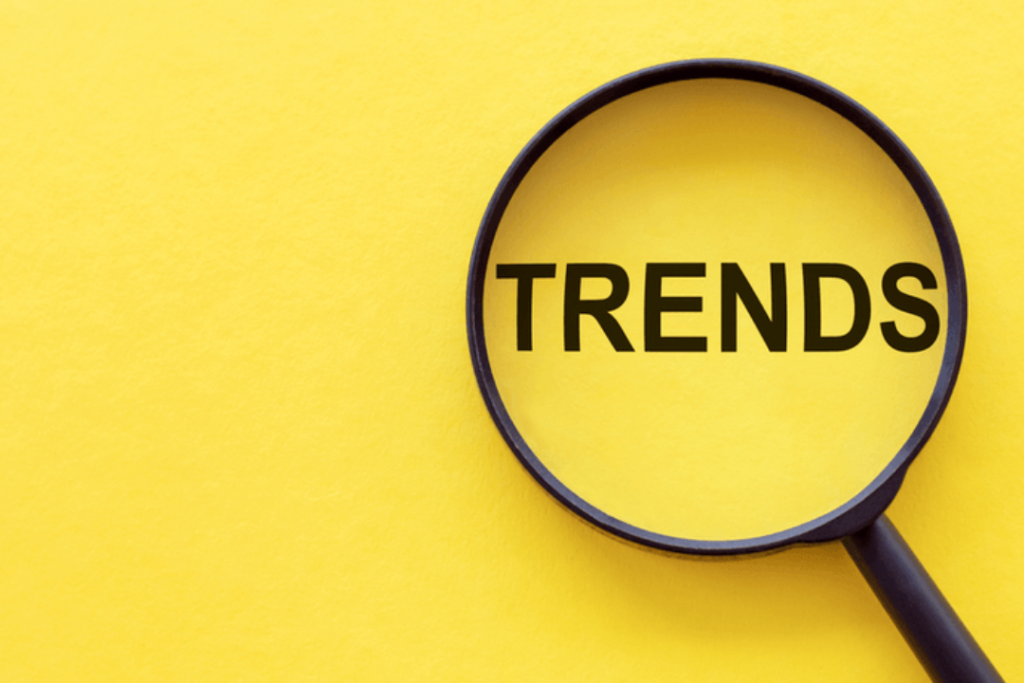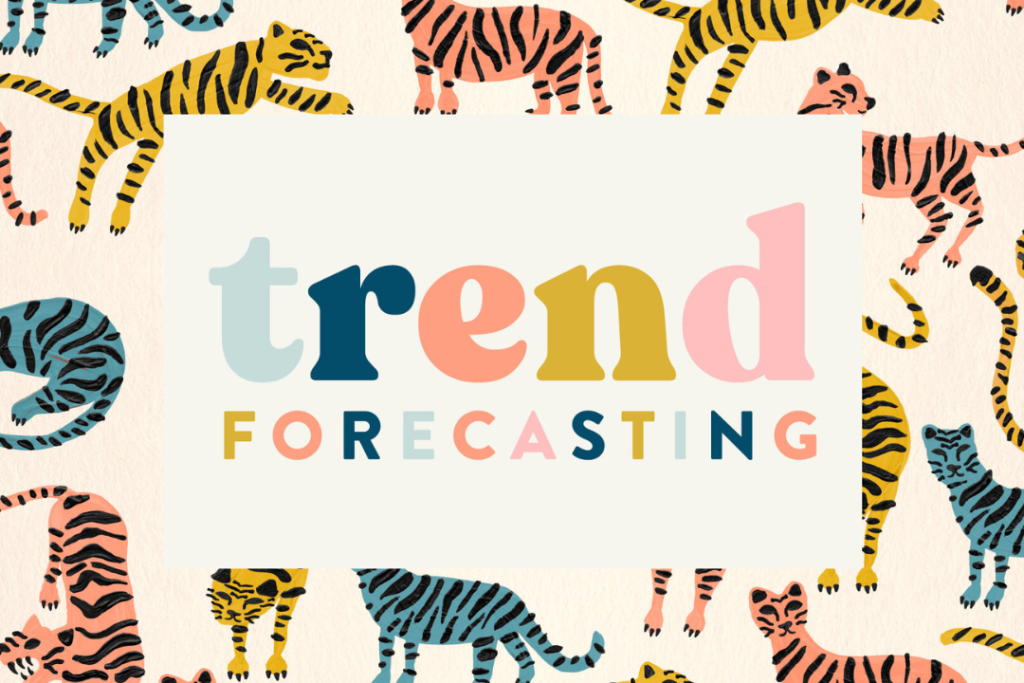Physical Address
60 Ekwema Cres, Layout 460281, Imo
Physical Address
60 Ekwema Cres, Layout 460281, Imo

Have you ever noticed a spike in a particular fashion or product around you? Maybe everyone is raving about the new live print, or your smartphone app of choice is suddenly dominating your social media feed.
That, my friend, is trends in action! But how do people predict these trends before they explode? This is where trend forecasting comes in.
Africa is now a continent brimming with creativity and precise cultural impacts. But when it comes to prognostic properties, they are often overshadowed by the use of global trends.
In this article, we will walk you through the step-by-step guides to trend forecasting in Africa. So buckle up and get ready to uncover the secrets of trend forecasting in Africa! This guide not only allows you to observe trends but to anticipate them or even influence them!

Trend forecasting is the process of using market research and customer information to make predictions about the fate of customers’ buying habits and preferences.
Trend forecasting gives product designers insight that can help them position an object that their target market likes and buys. It uses quantitative and time series of facts, i.e. numerical information factors that form the predominance of tendencies during exceptional periods.
Forecasters investigate cultural and environmental changes to see how they can affect client behavior and priorities. The two basic variants of trend forecasting include:
Read Also – 14 Global Telecommunication Trends in 2024
Trend forecasting is vital as it allows you to save resources on spending on merchandise that may not be successful with their target audience, and alternatively allows them to create merchandise that matches the wants and priorities of their customers.
This can help groups save time and money by accounting for market needs and product recognition, expanding their ability to create something their customers support.
This enables corporations to capitalize on client opportunities by recognizing market opportunities as they arise.

Africa is a continent brimming with innovation and exchange. To forecast trends in Africa and anticipate what tendencies will emerge next, experts examine information that reflects a particular individual in Africa. This data covers cultural choices, monetary conditions, and the way people interact with society.
The starting point is finding the right statistics. Reviews of market studies, surveys asking customers for their criticisms, or even what’s trending on social media are all valuable resources. In addition, economists add records of how economies grow.
Once all this information is gathered, the use of computer applications is analyzed looking for patterns and developments. This allows forecasters to make informed predictions about what will be famous in the future. However, Africa is a continent of many countries, each with its own flavor. To be honest, forecasters have to keep in mind those close releases as well.
In short, understanding unique African facts is critical for projecting continent-wide trends.
Also Read – Digital Marketing Trends For 2024
Early detection of developments can give your business a significant edge in the African market. Here’s a breakdown to help you forecast trends like a pro:
The purpose is to discover trends with boom capacity, not just what’s hot right now. Look for under-the-radar topics that are gaining traction. This can be problematic, but there are tools to help:
Africa is a diverse continent. Trends in one neighborhood may not work in others. Tailor your research to your target market:
There are online assets specifically designed for trend forecasting:
Once you’ve collected your statistics, explore them to discover patterns and connections:
Do not rely entirely on online information. Talk to people on the ground:
If you follow these steps and stay informed about the African context, you can become a trend-forecasting professional and run your commercial business for fulfillment in the ever-evolving African market.
Several devices and strategies are used in trend forecasting, which include:
Uncover the “why” behind client behavior. Tools like Google Analytics, Tableau, and IBM Watson go beyond just tracking website traffic.
They allow you to segment your audience, recognize their demographics and goals, and analyze their adventures through your revenue journey. These detailed statistics paint a clear picture of growing trends and the transfer of buyer decisions.
Keep your finger on the pulse of real-time conversations. Platforms like Brandwatch
and Hootsuite acts as social listening posts that allow you to track what people are saying about your brand, business development, and competition interests.
Sentiment scoring features within these platforms further reveal the emotional undercurrents of these conversations and help you discover areas of capability, opportunity, or dissatisfaction.
Use professional analysis and comprehensive fact files. Companies such as Euromonitor and Nielsen provide carefully researched reviews of various African markets.
These reviews offer valuable insights into marketplace length, increased forecasts, buyer demographics, and purchasing behavior. Utilizing these records, you can gain an impressive aspect and make informed decisions about product development, advertising and marketing strategies, and market approach.
Understand the features that shape the wider context. Organizations such as the African Development Bank and the World Bank are leading sources of economic records such as the GDP boom, inflation, and unemployment figures.
By taking these signs into account, you can count on what impact financial moves will have on buyer behavior and standard market developments.
Harness the power of cutting-edge algorithms for a comprehensive trend identity. AI and machine learning can examine full and diverse data sets – together with social media conversations, search queries, and financial data – to find hidden patterns and anticipate destiny trends with extra accuracy.
This allows you to stay ahead of the curve and make strategic decisions based on record-based insights.
Read Also – 20 Technology Trends in 2024 that will Blow Your Mind Away
Trend forecasting in Africa faces numerous challenges compared to more established metropolises. Here are some key limitations:
Despite these difficult situations, the African trend scene is brimming with talent. By addressing this data-limiting aid and embracing the specific cultural richness of the continent, trend forecasting can prove to be a powerful tool for African designers and corporations.
The business landscape in Africa is dynamic and constantly evolving. Trend forecasting can be a powerful tool for corporations in this place to live forward and achieve fulfillment. Here is the procedure:
By identifying growing capabilities, companies can find new market opportunities before the competition. This should include taking advantage of a growing segment of buyers, technological developments, or shifting social values.
Trend forecasting provides valuable insights that would influence industrial business alternatives. These records can be used for product development, marketing approach, allocation of assistance, or even selection of financing.
Businesses that anticipate developments can proactively adapt their offerings and techniques to remain applicable. This proactive method allows them to no longer be caught on the defensive by disruptive market changes.
Evaluating trends provides a window into how readers’ desires and options are evolving. This information allows organizations to tailor their merchandise, offers and messages to resonate more with their target market.
By leveraging trend forecasting, groups can expand modern services and products that meet the desires of the next day’s shoppers. This can result in a huge aggressive profit in the market.
Forecasting trends is particularly valuable in Africa because of the continent’s particular characteristics. Africa has a younger and growing population, rapid urbanization, and increasing technological adoption.
All of these factors contribute to a dynamic and rapidly changing business environment. By being aware of the trends, businesses in Africa can participate in sustainable growth and fulfillment.
Also Read – 4 Worrying Trends in Tech that are Causing Massive Layoffs in the Tech Sector
Even if you follow the step-by-step process described above, here are some additional suggestions to ensure that your trend predictions are extremely accurate and effective:
Great trend forecasters are usually on the lookout for new trends. By keeping an eye on current trends, you can spot growing opportunities and make timely adjustments to your product services. Exploding Topics offers weekly reports that provide insight into organizational and product trends, making it easy to stay in tune with modern developments.
To speed up the trend discovery process, start by identifying promising meta trends, then discover related themes within those trends. This technique allows you to recognize your efforts in areas of significant increase in capability and identify related trends that align with your business goals.
When formulating trend predictions, make sure you use quality data to make your prediction. Verify the timeliness of the information, the length of the pattern, and the credibility of the sources. Exploding Topics pulls facts from tons of Google Searches at once and gives you reliable and independent statistics to make the right forecasts.
To improve your trend forecasting capabilities, track the accuracy of your past predictions. By reading your previous hypotheses and comparing them to actual global results, you can perceive patterns and refine your forecasting strategies for future predictions.
Trend forecasting in Africa is a powerful tool for organizations and people who want to live forward.
By following our step-by-step guide, you can better recognize market dynamics, anticipate adjustments, and make informed decisions. Adopting trend forecasting in Africa will help you stay aggressive and thrive in a rapidly evolving landscape.
We’d love to hear your thoughts! Leave a comment and be part of the conversation. Don’t forget to follow us on Facebook at Silicon Africa, Instagram at Siliconafricatech, and Twitter at @siliconafricatech for more guides and other valuable information.
Local corporations can start by gathering relevant statistics, reading market developments, and the know-how of their target group. Collaborating with local experts and leveraging creative and social media insights are also effective steps.
Yes, trend forecasts can guide corporations and policymakers in making sustainable choices. Predicting shifts closer to green products or renewable electricity, facilitates the alignment of techniques with sustainability goals.
Start by becoming familiar with the market situation, cultural influences, and historical trends. Use both quantitative records and qualitative insights to perceive growing styles.